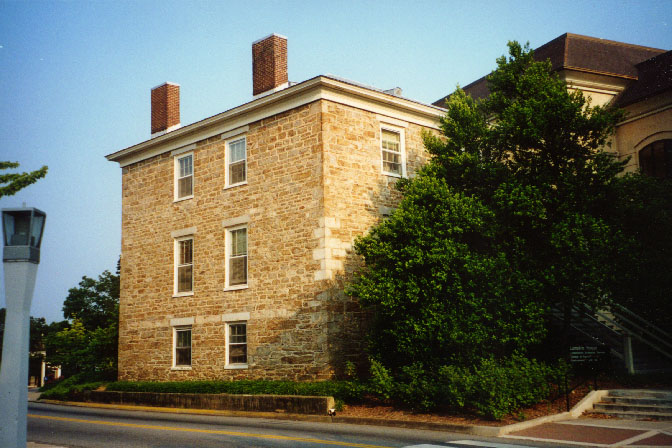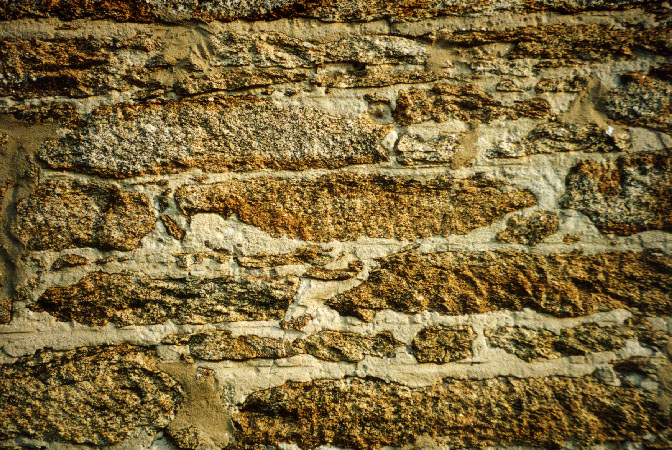
In 1907 the Lumpkin family deeded the house and its land to the University of Georgia, and that land is now much of the University's South Campus. One condition of the family's bequest was that the land would revert to the Lumpkin family if the University destroyed or moved the house. That's why Lumpkin House now sits as a tiny and antiquated anomaly amidst behemoths like Conner Hall.
Lumpkin House is also an anomaly because it is built of Athens Gneiss, the metamorphic bedrock that underlies Clarke County and the surrounding area in the Piedmont of central northeast Georgia. The Athens Gneiss formed at high temperatures and pressures deep under the young Appalachians as North America and Africa collided about 300 million years ago. Today, it is used for aggregate, but it breaks so unpredictably that it is rarely used for building stone. The image below shows the irregular chunks of rock in the walls of Lumpkin House, demonstrating why the gneiss is not a popular building stone. In its fresh state, it is almost white (as seen in the upper part of the image), but it weathers to an unattractive brown, so that its aesthetic properties are limited too.
The igneous and metamorphic rocks of the Piedmont weather to produce abundant clays. That abundance of clay, and the intractability of the Athens Gneiss as a building stone, help explain why the University of Georgia is built mostly of brick. Conner Hall, in the backgound of the image above, is thus a more typical UGA building in both size and building material. The gneiss and neighboring rocks have not provided building stones, but their weathering products - clays - have instead gone into bricks to provide a more workable building material in the Piedmont.
